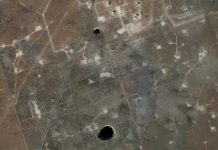The best place to observe icebergs is in Iceberg Alley, which runs from the Arctic to the southeast coast of the island of Newfoundland. You can even do this while preparing the regional specialty “Jiggs supper” from your kitchen window.
If you reside in Canada’s Iceberg Alley, you’ll never run out of icebergs to explore. They’ll look even more stunning in the spring when the sea ice melts.
The source of the icebergs is much further north, namely Greenland, where glacier chunks separate throughout the spring and summer. Then, from north to south, they are carried by ocean currents across Baffin Bay to the Labrador Sea, where they melt.
A smaller percentage of these behemoths come from Canada; currents carry them from Baffin Bay through the David Strait and into the Labrador Sea before they reach Newfoundland’s eastern and western coasts.

It is estimated that 400–800 of these enormous icebergs, which are about 10,000 years old, pass through Iceberg Alley every year. Although its usual speed is around 0.4 miles per hour, it can vary depending on a variety of circumstances, including their shape and size, as well as winds, currents, and waves.
Even though these icebergs seem gigantic, what you see is only the “tip of the iceberg.” Only about ten percent of the iceberg is visible above the ocean!

There are six different types of icebergs, according to Atlas Obscura, and Iceberg Alley has all six. Ice blocks known as tabular icebergs are noticeably wider than they are tall. Blocky icebergs resemble truncated pyramids with their steep slopes and acute angles. Icebergs that are wedged have a slope and a steep side. The top of dome icebergs is rounded. Icebergs with sharp pinnacles that protrude upward are called pinnacle icebergs. Icebergs at dry docks are also U-shaped.

As icebergs go south, they land in increasingly warm waters, where they start to melt. At this stage, they become incredibly unpredictable, as seen by the one in 1912 that sank the Titanic off the coast of Newfoundland. Despite the fact that we can currently track medium and large icebergs via satellite, little ones frequently go undetected and present the greatest threat to smaller vessels.
On the other hand, any satellite could clearly see the one below. In 2017, when this enormous iceberg came to rest next to a little Newfoundland community, it attracted attention from all around the world.
Even a stamp was created for the famous scene:

So even though this huge melted a long time ago, it continues to travel the world via postcards. Iceberg Alley is just incredible.






